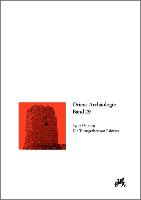Die Turmgräber von Palmyra
BücherAngebote / Angebote:
Lokal entstandene Turmgräber [1. Jh. v. - 2. Jh. n.Chr.] mit gestuftem Sockel, Schaft, Innentreppe und begehbarem Flachdach für Zeremonien stellen mit ca. 180 Stück die größte Denkmälergruppe der Oasenstadt dar. Mit T-förmigen Hypogäen [1.-3. Jh.] und Tempelgräbern mit Säulenfassade [M. 2. Jh. - 3. Jh.] säumten sie in fünf zeitgleichen Nekropolen die Ausfallstraßen. Anhand aramäischer / griechischer Inschriften lassen sich 54 Grabanlagen fest datieren. Die Beisetzung erfolgte in bis zu 400 Schächten je Grabbau, sog. loculi, oder seit Mitte des 1. Jhs in Sarkophagen. Die Wahl der etwa gleich teuren Grabanlagen hing wohl von Tradition und Jenseitsvorstellung einer Familie ab. Turmgräber bestanden aus Zweischalenmauerwerk, dem opus Palmyrenum, das bis ins 1. Jh. n.Chr. leicht einwärts geneigt war, und wurden mit einfachen technischen Mittel errichtet. Der mit der Romanisierung ab 50 n.Chr. immer reichere Dekor folgte einem festen Kanon nach kleinasiatischem Vorbild mit Tür, Inschrift, Reliefnische, Gurtgesims, Graffiti, Skulpturen und Wandmalerei. Darstellungen der Toten zeigen deren gesellschaftlichen Stand an. Turmgräber sind ein wichtiges Zeugnis für die Identität Palmyras.
Tower tombs of local origin [1st century B.C. to 2nd century A.D.] with a stepped base, shaft, internal staircase, and accessible flat roof for ceremonies are the largest group of monuments with some 180 specimens in this oasis. Together with T-shaped hypogaea [1st to 3rd century] and temple tombs with a colonnaded front [mid-2nd to 3rd century] they lined the arterial roads in a total of five contemporaneous necropoleis. By means of Aramaic / Greek inscriptions 54 graves can be dated safely. Burial took place in up to 400 shafts per grave, so-called locustadtgeli, or in sarcophagi from the mid-1st century onwards. Due to equal expenses, the choice of grave type was probably made according to family tradition or religious conviction. Tower tombs had hollow masonry walls, the opus Palmyrenum, were slightly tilted until the 1st century A.D., and were built by simple technical means. Their design observed a strict canon after Near Eastern models including door, inscription, relief alcove, cornice, graffiti, sculptures, and mural paintings and became richer and richer as Romanisation progressed after A.D. 50. Images of the deceased show their social standing. Tower graves are important evidence for Palmyrene identity.
Folgt in ca. 2-3 Arbeitstagen




